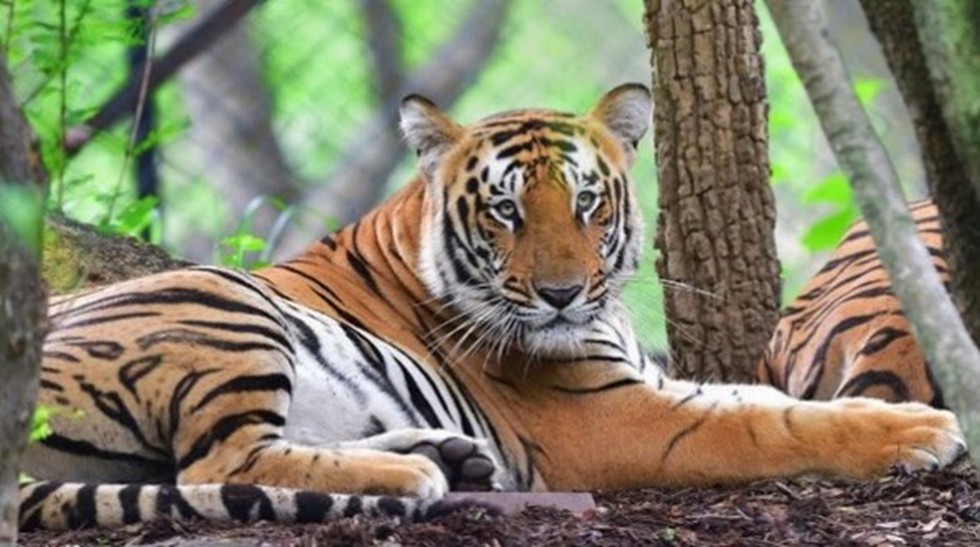About Kawal Tiger Reserve:
- Location:
- It is located in North Eastern part of Telangana(Old Adilabad district), with the Godavari River on one side and the Maharashtra border on the other.
- It forms part of the Deccan peninsula-central highlands.
- Rivers: The reserve is the catchment for the rivers Godavari and Kadam, which flow towards the south of the sanctuary.
- Corridor: It has connectivity to the Tadoba-Andhari Tiger Reserve of Maharashtra in the North and to the Indravati tiger reserve of Chhattisgarh towards its North-Eastern side.
- Habitat: It has diverse habitats comprising of dense forests, grasslands, open areas, rivers, streams and water bodies.
- Vegetation: Southern Tropical Dry Deciduous Forest.
- Flora:
- Teak is found extensively along with Bamboo.
- As many as 673 plant species have been recorded, and the important ones are Anogeissus latifolia, Mitragyna parviflora, Terminalia crenulata, Terminalia arjuna, Boswellia serrata etc.
- Fauna:
- It has a faunal diversity which is typical of the Deccan Plateau.
- The major wild animals include: nilgai, chousinga, chinkara, black buck, sambar, spotted deer, wild dog, wolf, jackal, fox, tiger, leopard, and the jungle cat.
Key Facts about Amrabad Tiger Reserve:
- Location: It is located in the Nagarkurnool and Nalgonda districts in the southern part of Telangana.
- It was notified as a sanctuary in 1983, and after the State bifurcation, it was declared as Amarabad Tiger Reserve in 2015.
- ATR covers a part of the Nallamala Forest and is home to a variety of flora and fauna.
- The hilly terrain of this Tiger Reserve, with deep valleys and gorges, forms the catchment of the Krishna River.
- Flora:
- Dense grass occurs in 30% of the area and is scattered in an additional 20%.
- Dominant tree species include Terminalia tomentosa, Hardwickia binata, Madhuca latifolia. Diospyros melanoxylon, Gardenia latifolia etc.
- Fauna:
- Major wild animals found are Tiger, Leopard, Wild dog, Indian Wolf, Indian fox, Rusty-spotted cat, Small Indian civet, Sloth bear, Honeybadger, Wild boar etc.
- Over 303 bird species have been identified in this region. Some important groups include Eagles, Pigeons, Doves, Cuckoos, Woodpeckers, Drongos etc.
